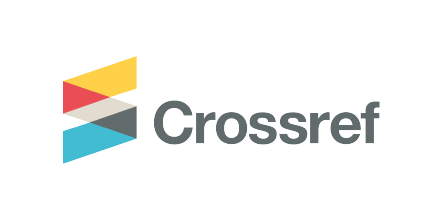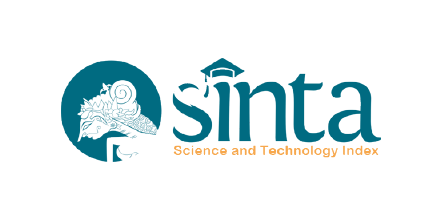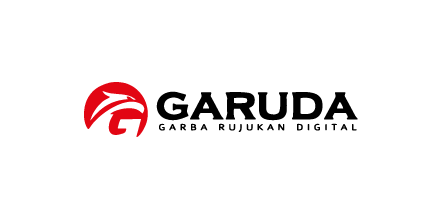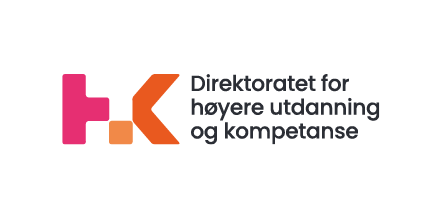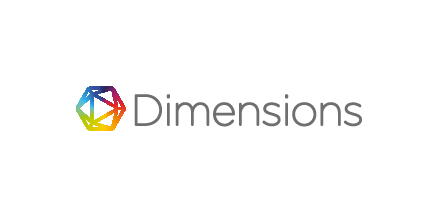Causes of Enrollment Disparities of Students with Disabilities in Tanzania Secondary Schools
DOI:
https://doi.org/10.21776/ub.ijds.2022.009.02.01Keywords:
Disability, Special School, Inclusive Classroom, Pupils, StudentsAbstract
This article argues that children with disabilities face significant obstacles in schooling in Tanzania, despite the government initiative to formulate policy and awareness creation for people with disabilities. This paper examined the causes of enrollments disparities of students with disabilities in the schooling system in Tanzania. Three objectives were addressed regarding enrollment trends from 2016 to 2020, causes leading to disparities in enrolments, and obstacles facing students with disabilities in non-inclusive schools. Documentary analysis and interview methods were used to collect information. The participants were special needs educators and students from secondary schools and universities. The findings reveal disparities in enrollment of students with disabilities as they advance from lower to higher levels of schooling. The analysis shows that the smaller number of students with disabilities in the schooling system was attributed to a lack of awareness among parents on the educational services provided to children with disabilities, traditional beliefs, poverty, stigma, and harassment. The analysis further shows that shortage of qualified teachers, poor school infrastructures, and unsupported inclusive classrooms was among many obstacles facing students with disabilities in schools.
References
ADD International. (2017). Disability and Gender-Based Violence. Peer Research in Kibaha and Mkuranga, Tanzania. ADD International.
African Initiatives. (2018). Disability needs assessment and situation analysis, Monduli and Longido Districts, Arusha Region, Moshi Rural and Urban Districts, Kilimanjaro Region. African Initiatives.
Barrett, S. (2018). From adult lunatic asylums to CAMHS community care: the evolution of specialist mental health care for children and adolescents 1948-2018. French Journal of British studies https://doi.org/10.4000/rfcb.4138.
Bender, R. (1970). The Conquest of deafness. Cleveland: Western Reserve University.
Craswell, J. W (2014) Research Design: Qualitative, Quantitative and Mixed Methods Approaches (4th Ed.). Thousand Oaks, CA: Sage.
D’Alessio, S., 2011, Inclusive education in Italy: A critical analysis of the policy of integrazione scolastica, Sense Publishers, Rotterdam.
Gargiulo, R. M. (2003). Special education in contemporary society: An introduction to exceptionality Toronto: Wardsworth Thomson Learning.
Graham, R.G. (2012). Case study design. University of Huddersfield.
Itard, J. M. G. (1962). The wild boy of Aveyron (G. Humphrey & M. Humphrey, Trans.). New York: Appleton-Century-Crofts (Original work published 1894).
Karakoski, J. & Strom, K. (2005). Special needs education in Tanzania: A fact-finding mission final report’. Dar es Salaam, Ministry of Education and Culture.
Kiomoka, D. J. (2014). Children with visual impairment in Tanzania: An investigation of the challenges children face in learning and participation in inclusive primary schools.
Kuper, H., Walsham, M., Myamba, F., Mesaki, S., Mactaggart, I., Banks, M., & Blanchet, K. (2016). Social protection for people with disabilities in Tanzania: a mixed-methods study. Oxford Development Studies, 44:4, 441-457.
Lamichhane, K. (2015). Disability, Education and Employment in Developing Countries: From Charity to Investment. Delhi, India: Cambridge University Press.
Lane, H. L. (1976). The wild boy of Aveyron. Cambridge, MA: Harvard University Press.
Lisicki, B. (2013). The social model of disability. Retrieved from www.inclusionlondon.org.uk on 6th August 2021.
Mapunda, P. H., Omollo, A. D., & Bali, T. A. L. (2017). Challenges in identifying and serving students with special needs in Dodoma, Tanzania. International Journal of Childcare and Education Policy, 11:10, 1-16.
McDermott, D. E. (1994). Jean Itard: The first child and youth counsellor. Journal of Child and Youth Care, 9(1) 59-71.
Mohamedali, S. S. (2011). A Tanzanian dilemma: School access for children with disabilities. Proceedings for the twelfth biennial conference of the International Association for Special Education, pp. 106-108. Windhoek, Namibia.
Moyi, P. (2017). School Enrolment and Attendance for Children with Disabilities in Kenya: An Examination of Household Survey Data. FIRE: Forum for International Research in Education, 4(2). http://dx.doi.org/10.18275/fire201704021133
Mrisho, M., Kakih, B., Greenwood, M., & Steff, M. (2016). Hear my voice: old age and disability are not a curse. Sightsavers.
Mwaipopo, R. N., Lihamba, A., & Njewele, D. C. (2011). Equity and equality in access to higher education: The experiences of students with disabilities in Tanzania. Research in Comparative and International Education, 6(4), 415-429.
National Bureau of Statistics (NBS). (2015b). Number of persons with disabilities aged 5 years and above by type of disability by literacy - 2014 ILFS. The United Republic of Tanzania.
National Bureau of Statistics (NBS). (2015d). Number of persons with disabilities aged seven years and above by Level of Education, Tanzania Mainland – 2014. The United Republic of Tanzania.
National Bureau of Statistics (NBS). (2016). Disability Monograph. The United Republic of Tanzania.
Newman, S. (2006). Study of several involuntary functions of the apparatus of movement, gripping, and voice’ by Jean-Marc Gaspard Itard (1825). History of Psychiatry, SAGE Publications Vol. 17 (3) 333-339. Ff10.1177/0957154X06067668ff.
Opini, B. & Onditi, H. (2016). Education for all and students with disabilities in Tanzanian primary schools: challenges and successes. International Journal Education Studies 3 (2) 65-76.
Possi, M. K., Milinga, J. R. (2017). Special and Inclusive Education in Tanzania:
Reminiscing the Past, Building the Future. Educational Process: International Journal, 6(4), 55-73.
Possi, M. K., & Milinga, J. R. (2017). Special and inclusive education in Tanzania: reminiscing the past, building the future. Educational process: International Journal, 6(4), 55-73.
Retief, M. & Letšosa, R., (2018), ‘Models of disability: A brief overview. HTS Theologies Studies/ Theological Studies 74(1), a4738. https://doi.org/ 10.4102/hts.v74i1.4738.
Rohwerder, B. (2020). Tanzania Situational Analysis. Disability Inclusive Development.
Rudnick, A. (2017). The medical versus the social model of disability: Physical Medicine and Rehabilitation Research Vol. 2(6): 1-2. Doi: 10.15761/PMRR.1000157
Salewi, D. H. (2011). The killing of persons with albinism in Tanzania: A social-legal inquiry. Centre for Human Rights, University of Pretoria.
Sarton, E. and Smith, M. (2018). UNICEF think piece series: disability inclusion. UNICEF Eastern and Southern Africa Regional Office, Nairobi.
Tiwari, S., Savastano, S., Improta, M., & Winters, P. C. (2019). Rural Economic Activities and Persons with Disabilities in Sub-Saharan Africa. IFAD.
Tungaraza, F. D. (1994). The development and history of special education in Tanzania. International Journal of Disability, Development and Education 41, 213-222.
Tungaraza, F. D. (2007). Parents of children with disabilities in Tanzania: The challenges facing them in HURIA Journal of the Open University of Tanzania, Volume VII (1). Dar es Salaam: Open University of Tanzania.
Tungaraza, F. D. (2015). The arduous march towards inclusive education in Tanzania: Headteachers’ and teachers' perspectives. Africa today, 61(2) 108-123.
UNESCO. (2014). EFA global monitoring report 2013-2014. Teaching and learning: achieving quality education for all. France: UNESCO.
UNICEF. (2013). The State of the world's children: children with disabilities. New York.
UNICEF. (2015). Fixing the broken promise of education for all: Findings from the global initiative on out-of-school children. Montreal: UNESCO Institute for Statistics.
URT. (1982). The Disabled Persons (Employment) Act No. 2 of 1982.
URT. (2008). The 2012 census management and implementation strategy handbook. Dar es Salaam: The National Bureau of Statistics
URT. (2014). Education and Training Policy. Dar es Salaam: Ministry of Education and Vocational Training.
URT. (2016). Basic Education Statistics in Tanzania (BEST) 2006-2010 National Data. Dar es Salaam, Ministry of Education, Science and Technology Press.
URT. (2017). Basic Education Statistics in Tanzania (BEST) 2006-2010 National Data. Dar es Salaam, Ministry of Education, Science and Technology Press.
URT. (2018). Basic Education Statistics in Tanzania (BEST) 2006-2010 National Data. Dar es Salaam, Ministry of Education, Science and Technology Press.
URT. (2019). Basic Education Statistics in Tanzania (BEST) 2006-2010 National Data. Dodoma, Ministry of Education, Science and Technology Press.
URT. (2020). Basic Education Statistics in Tanzania (BEST) 2006-2010 National Data. Dodoma, Ministry of Education, Science and Technology Press.
URT. (2010). The Persons with Disability Act, 2010. Dar es Salaam: Government Printer.
URT. (2009). National Strategy on Inclusive Education 2009-2017. Dar es salaam.
URT. (2019). Performance audit report on management of education for pupils with special needs. Dodoma. Tanzania.
Verma, G. K, Bagley, C. R. & Jha, M. M. (2007). International perspectives on educational diversity and inclusion: Studies from America, Europe and India. London: Routledge Taylor & Francis Group.
World Bank. (2006). Disability and development: data and statistics on disability. Retrieved from http://go.worldbank.org/UA734UP0G0 on 28th July 2021.
World Health Organisation. (2011). World Report on Disability. Geneva, WHO Press.
World Health Organisation. (2002). Towards a common language for functioning, disability and health- Geneva.
World Health Organization & World Bank. (2011). World Disability Report 2011. Geneva
Anastasiou, D., Gregory, M. & Kauffman, J.M. (2018). The UN Convention on the rights of persons with disabilities: A commentary. Pg., 656 Oxford University Press.
World Summit for Children (1990). World Declaration on the Survival, Protection and Development of Children: Plan for Action for Implementing the World Declaration on the Survival, Protection and Development of Children in the 1990s. New York., USA.
Odongo, G. (2018). Barriers to parental/family participation in the education of a child with disabilities in Kenya. International journal of special education vol.33 (1):21-32.
Published
How to Cite
License
Copyright (c) 2022 Kambuga Yusuph, Hussein. A. Hussein

This work is licensed under a Creative Commons Attribution-NonCommercial 4.0 International License.









